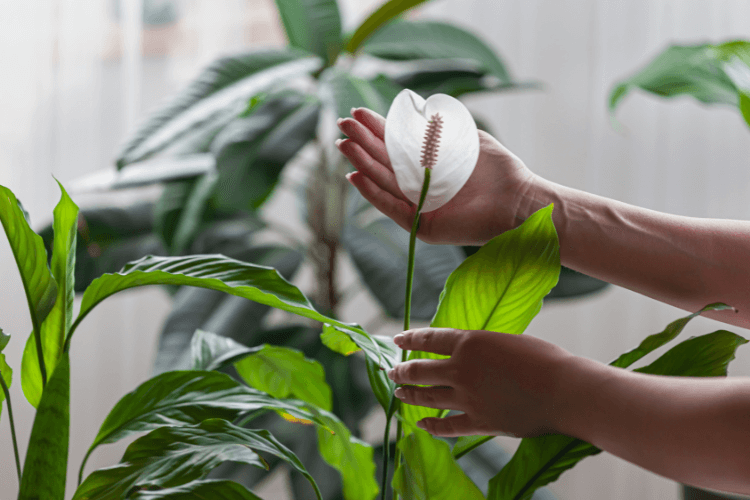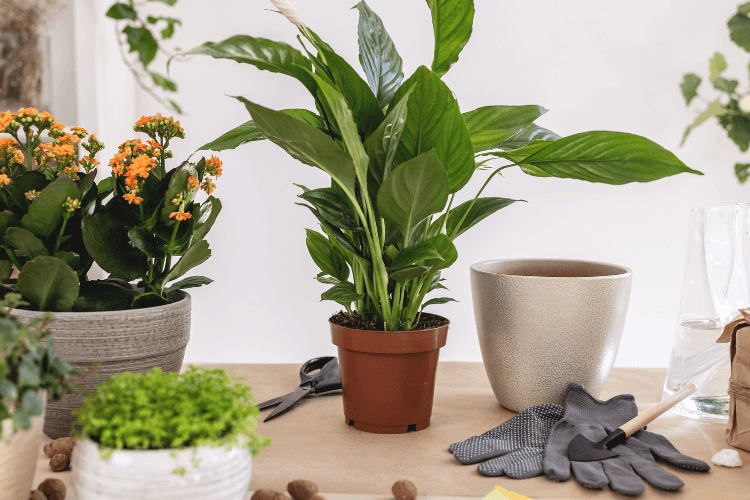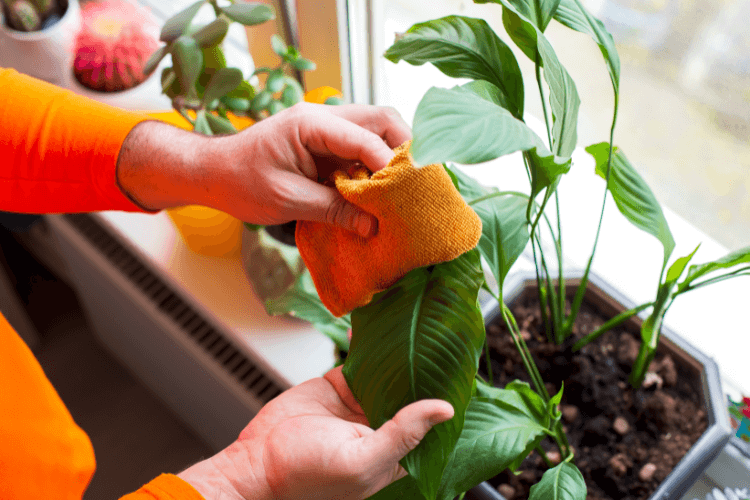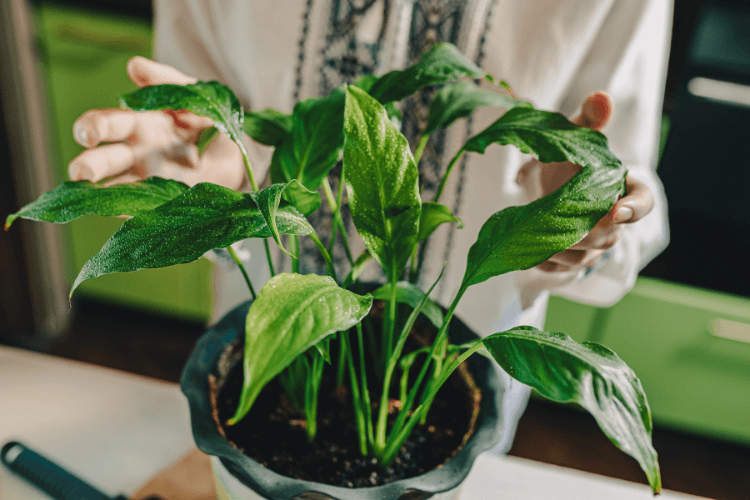There’s something truly magical about transforming your living space into a green sanctuary where every leaf and bloom tells a story. When you commit to Peace Lily Plant Care, you’re not only nurturing a beautiful plant—you’re inviting nature’s calm into your everyday life. This comprehensive guide is designed just for you, blending practical steps with heartfelt insights to help you master the art of caring for your peace lily. Whether you’re a novice looking for peace lily care for beginners or an experienced plant parent refining your routine, these five simple steps will empower you to create a thriving indoor oasis.
Table of Contents
Introduction: The Heart of Peace Lily Plant Care
You remember the first time you encountered a peace lily: its lush, dark green leaves, elegant white blooms, and the air of tranquility it exuded. That instant connection is what fuels your passion for plant care. In this article, you’ll embark on a journey to unlock the secrets of Peace Lily Plant Care, tailored to answer your questions and solve your challenges. From understanding your plant’s unique needs to troubleshooting common issues, each step is infused with expert advice and practical tips. Let’s dive into a process that not only enhances your indoor space but also enriches your daily life.
Step 1 – Understanding Your Peace Lily: The Basics of Peace Lily Plant Care

Recognizing Key Characteristics
Before you can care for your peace lily effectively, it’s essential to understand what makes it so unique. Here’s what you need to know:
- Distinctive Features:
- What Are the Key Characteristics of Peace Lily? You’ll notice its striking foliage, deep green in color with occasional variegated patterns, and the elegant, pure white spathes.
- Look out for natural signs such as Peace Lily Leaves Turning Yellow or Peace Lily Brown Tips. These indicators can hint at nutritional imbalances or environmental stress.
- Emotional Connection:
- Recall how the soft, graceful curves of the leaves and the gentle blooms have transformed your living space into a haven of serenity. Your peace lily is more than a plant; it’s a companion in your quest for tranquility.
- Practical Insights:
- Understanding these basic characteristics lays the foundation for all your care efforts. When you recognize the natural patterns of your peace lily, you can quickly identify when something isn’t right, such as a sign that it might be how to care for a peace lily that is dying.
Identifying Common Issues
Every plant faces challenges, and your peace lily is no exception. To ensure its longevity, it’s important to spot potential problems early:
- Warning Signs:
- Observe for symptoms like drooping leaves, discoloration, or the dreaded Peace Lily Leaves Turning Yellow. These may indicate overwatering or insufficient light.
- Similarly, Peace Lily Brown Tips can be a red flag for issues like nutrient deficiency or improper watering.
- Troubleshooting Tips:
- If you suspect that your plant is struggling, consider the question, when to water peace lily appropriately. Adjusting your watering schedule can make all the difference.
- Regular inspection will help you determine if your care routine needs a tweak, especially if your plant isn’t thriving as expected.
Understanding these basics sets you on the right path to successful Peace Lily Plant Care. With these insights, you can move forward confidently, knowing how to nurture your plant back to health if needed.
Step 2 – Setting Up Your Environment for Optimal Peace Lily Plant Care

Indoor and Outdoor Considerations
Your peace lily’s environment plays a crucial role in its overall health. Creating the perfect setting requires careful attention to both indoor and outdoor conditions:
- Indoor Benefits:
- When you practice peace lily plant care indoors, you have greater control over factors like light, humidity, and temperature. Bright, indirect sunlight is ideal, so position your plant near a window but away from harsh direct rays.
- For those wondering how to take care of lily plant indoor, establishing a routine that includes regular dusting of leaves and consistent watering is key.
- Outdoor Advantages:
- In certain climates, you might explore peace lily plant care outdoor. However, remember that these plants thrive best in controlled environments. Outdoor exposure should be limited to shaded areas where they can enjoy a gentle breeze without the intensity of direct sunlight.
- Balance is essential—if you choose to move your peace lily outside, make sure to monitor it closely for any signs of stress.
- Key Tips:
- Compare the settings: indoors, you benefit from a stable environment with controlled humidity, while outdoors offers natural light but requires extra caution against weather extremes.
- Use these insights to tailor your setup for maximum growth and longevity.
Creating the Ideal Habitat
Now that you know where your peace lily thrives, let’s focus on setting up the perfect habitat:
- Lighting Requirements:
- Your plant needs bright, indirect light to flourish. Understanding Peace Lily Light Requirements helps you avoid the pitfalls of too much or too little sun.
- Soil and Drainage:
- Choose a well-draining potting mix; Peace Lily Soil should support robust root development while preventing waterlogging. A mix enriched with organic compost can provide essential nutrients.
- Temperature and Humidity:
- Maintain stable conditions; your peace lily will benefit from consistent warmth and moderate humidity. For guidance on White Anthurium Peace Lily Temperature Tolerance, ensure your home environment is kept comfortably warm.
- Practical Setup:
- Create a designated spot in your home where these conditions are met. Whether it’s a sunny corner in your living room or a quiet spot in your office, ensure that your peace lily has a nurturing space that promotes growth.
By optimizing your environment, you set the stage for your Peace Lily Plant Care routine to be both effective and rewarding.
Step 3 – Daily Maintenance and Troubleshooting in Peace Lily Plant Care

Routine Care Practices
Daily care is the heartbeat of Peace Lily Plant Care. Establishing a routine helps you maintain a healthy plant and catch any issues before they escalate:
- Regular Watering:
- Water your peace lily consistently. A good rule of thumb is to water when the top inch of soil feels dry. This simple practice prevents both overwatering and underwatering.
- Leaf Care:
- Dust off your plant’s leaves regularly to allow it to breathe and absorb light effectively. Consider a weekly wipe-down with a soft cloth.
- Inspection Checklist:
- Develop a daily or weekly checklist:
- Check for Peace Lily Leaves Turning Yellow or Peace Lily Brown Tips.
- Ensure that there are no signs of pests or disease.
- Adjust watering schedules based on seasonal changes.
- Develop a daily or weekly checklist:
- Beginner Tips:
- If you’re new to plant care, starting with a routine can be especially beneficial. For peace lily care for beginners, keep it simple: regular watering, adequate light, and a watchful eye on overall health.
Troubleshooting Common Problems

Despite your best efforts, challenges may arise. Here’s how to tackle common issues:
- Flowering Problems:
- If your plant is peace lily not flowering, it may be due to insufficient light or improper watering. Adjusting these factors can often reinvigorate bloom production.
- Addressing Deterioration:
- Should you notice signs of distress—such as how to care for a peace lily that is dying—assess your care routine. It might be necessary to modify the watering frequency or check the soil’s drainage capability.
- Safety for Pets:
- Remember, Peace Lilies are Toxic to Cats and Peace Lilies Toxic to Dogs. If you have pets, ensure your plant is placed in a safe location where they cannot reach it.
- Actionable Steps:
- Adjust your watering schedule if the soil seems too damp or too dry.
- Consider using a diluted fertilizer every few weeks to boost growth if needed.
- Always inspect the plant for any signs of pests and treat promptly with eco-friendly solutions.
By integrating routine practices and effective troubleshooting, you can ensure that your Peace Lily Plant Care remains consistent and effective, allowing your plant to flourish over time.
Step 4 – Advanced Techniques: Repotting, Propagation, and Organic Care

Mastering Repotting and Propagation
As your peace lily grows, it may eventually outgrow its current pot. Here’s how to manage repotting and even propagate your plant for extra growth:
- Repotting Tips:
- When to repot is key—spring is typically the ideal time. Use a pot that’s one size larger than the current one and ensure it has proper drainage.
- How to repot a peace lily without stressing it: gently loosen the root ball and transfer it into fresh, nutrient-rich soil.
- Propagation Techniques:
- If you’re looking to multiply your green beauties, try Peace Lily Propagation. You can propagate by dividing the plant or even using leaf segments.
- For detailed guidance, refer to trusted methods on How to Repot a Peace Lily and Peace Lily Propagation, ensuring that each new plant receives the care it needs.
- Key Benefits:
- Repotting not only gives your plant more room to grow but also refreshes its nutrient intake.
- Propagation is a rewarding process that expands your indoor garden and allows you to share your passion with friends or family.
Boosting Growth with Organic Fertilizers
Enhance your plant’s growth naturally by using an organic fertilizer. Here’s a simple DIY recipe that you can mix at home:
DIY Fertilizer Recipe Table
| Ingredient | Quantity | Benefits |
|---|---|---|
| Organic Compost | 1 cup | Boosts soil nutrients and improves structure |
| Diluted Fish Emulsion | 2 tablespoons | Promotes rapid root development |
| Eggshell Powder | 1 teaspoon | Provides essential calcium for robust growth |
| Banana Peel Extract | 2 tablespoons | Enhances overall plant vigor and stimulates blooms |
| Water | 1 liter | Ensures even nutrient distribution |
- Application Tips:
- Mix the ingredients thoroughly and apply the solution during repotting or as a periodic supplement.
- Using organic ingredients helps maintain a natural balance and supports the plant’s long-term health.
- Follow a regular feeding schedule to avoid nutrient burn, adjusting as per the seasonal needs of your plant.
This advanced care step ensures that your peace lily receives the organic boost it needs to remain healthy and vibrant.
Step 5 – Monitoring Progress and Evolving Your Peace Lily Plant Care Routine

Tracking Growth and Adjusting Care
To truly master Peace Lily Plant Care, you must be proactive in monitoring your plant’s progress and making adjustments as necessary:
- Keep a Garden Journal:
- Document your plant’s growth, noting watering dates, repotting sessions, and any changes in leaf color or bloom patterns.
- A journal can help you identify patterns and troubleshoot issues before they become serious.
- Visual Cues and Measurements:
- Observe your plant regularly for signs of overcrowding or stress, such as Peace Lily Is Crowded conditions.
- Measure growth progress over time, using these observations to fine-tune your care routine.
- Seasonal Adjustments:
- As the seasons change, your plant’s needs may evolve. Adapt your watering frequency and light exposure accordingly.
- Use feedback from your plant to decide when to refresh the soil or modify your maintenance routine.
Expert Tips and Community Insights
You are not alone in your journey of Peace Lily Plant Care. Engaging with the community and learning from experienced growers can provide invaluable insights:
- Share Your Experiences:
- Participate in online gardening forums and social media groups dedicated to indoor plants. Sharing your experiences not only helps others but also enriches your own knowledge.
- Learn from the Experts:
- Seek advice from trusted sources on topics like how to care for a peace lily indoors and peace lily care for beginners. These insights can offer fresh perspectives and innovative solutions.
- Continuous Learning:
- Gardening is an evolving art. Remain open to experimenting with new techniques and adapting your routine as your peace lily grows and changes.
- Community Engagement:
- Interact with fellow plant enthusiasts to exchange tips on managing challenges like peace lily not flowering or dealing with how to care for a peace lily that is dying. This collaborative approach can be both motivating and enlightening.
By continuously monitoring and adjusting your approach, you ensure that your Peace Lily Plant Care routine stays effective and evolves with your plant’s needs.
FAQ: Your Peace Lily Plant Care Questions Answered
Frequently Asked Questions
- Q1: How often should I water my peace lily?
A: You should water your peace lily when the top inch of soil feels dry. This typically translates to once a week, though seasonal variations may require adjustments. - Q2: What are the signs that my peace lily is not thriving?
A: Look for symptoms like Peace Lily Leaves Turning Yellow, Peace Lily Brown Tips, or an overall lack of new growth. These are early indicators that your plant may be under stress due to overwatering, insufficient light, or nutrient issues. - Q3: Can I care for a peace lily indoors and outdoors?
A: Yes, though there are key differences. Indoors, ensure your plant receives bright, indirect light and is protected from drafts. Outdoors, choose a shaded spot to prevent direct sunlight and monitor for environmental stressors. - Q4: How do I repot a peace lily without stressing it?
A: Gently remove your plant from its current pot, loosen the root ball, and transfer it to a slightly larger pot with fresh, well-draining soil. Repot during the spring for best results, and water thoroughly after repotting to help the roots settle. - Q5: Are peace lilies safe around pets?
A: No, peace lilies are toxic to both cats and dogs if ingested. Ensure your plant is placed in an area inaccessible to your pets, or consider alternative non-toxic plants if safety is a concern.
Conclusion: Embrace the Journey of Peace Lily Plant Care
As you’ve discovered through these five straightforward steps, mastering Peace Lily Plant Care is a journey filled with continuous learning, adjustment, and heartfelt engagement. By understanding your plant’s unique characteristics, creating the ideal environment, establishing daily routines, and embracing advanced care techniques, you’re not just maintaining a plant—you’re nurturing a living piece of art that brings tranquility and beauty into your life.
Your peace lily is a reflection of your dedication and passion. Every time you water it, repot it, or simply admire its graceful blooms, you’re participating in a process that revitalizes your space and uplifts your spirit. The care you invest now will reward you with a thriving indoor oasis that not only beautifies your home but also provides a calming sanctuary where you can escape the stresses of everyday life.
A Call-to-Action for Your Green Journey
Now is the perfect time to put your newfound knowledge into practice. Gather your tools, set up your ideal plant habitat, and embark on this fulfilling journey of Peace Lily Plant Care. Share your progress, exchange tips with fellow plant enthusiasts, and let your indoor garden flourish. Remember, every thriving peace lily began with a single act of care, and your next step could be the start of a beautiful transformation. Join our community of plant lovers, subscribe for more tips, and let your green oasis be a testament to your nurturing spirit.
Embrace the journey, trust your instincts, and watch as your peace lily transforms into a living symbol of beauty and serenity. Happy planting!
By following these practical steps and engaging deeply with your plant’s needs, you can create a harmonious environment where your peace lily thrives. Whether you’re dealing with common issues like peace lily not flowering or seeking advice on how to repot a peace lily gently, the insights provided here are designed to guide you every step of the way. Your path to mastering Peace Lily Plant Care is just beginning, and with each small success, you’re cultivating not only a plant but also a lifestyle centered on care, balance, and growth.
Remember, your indoor oasis awaits—take that next step and transform your living space into a sanctuary of green beauty.

